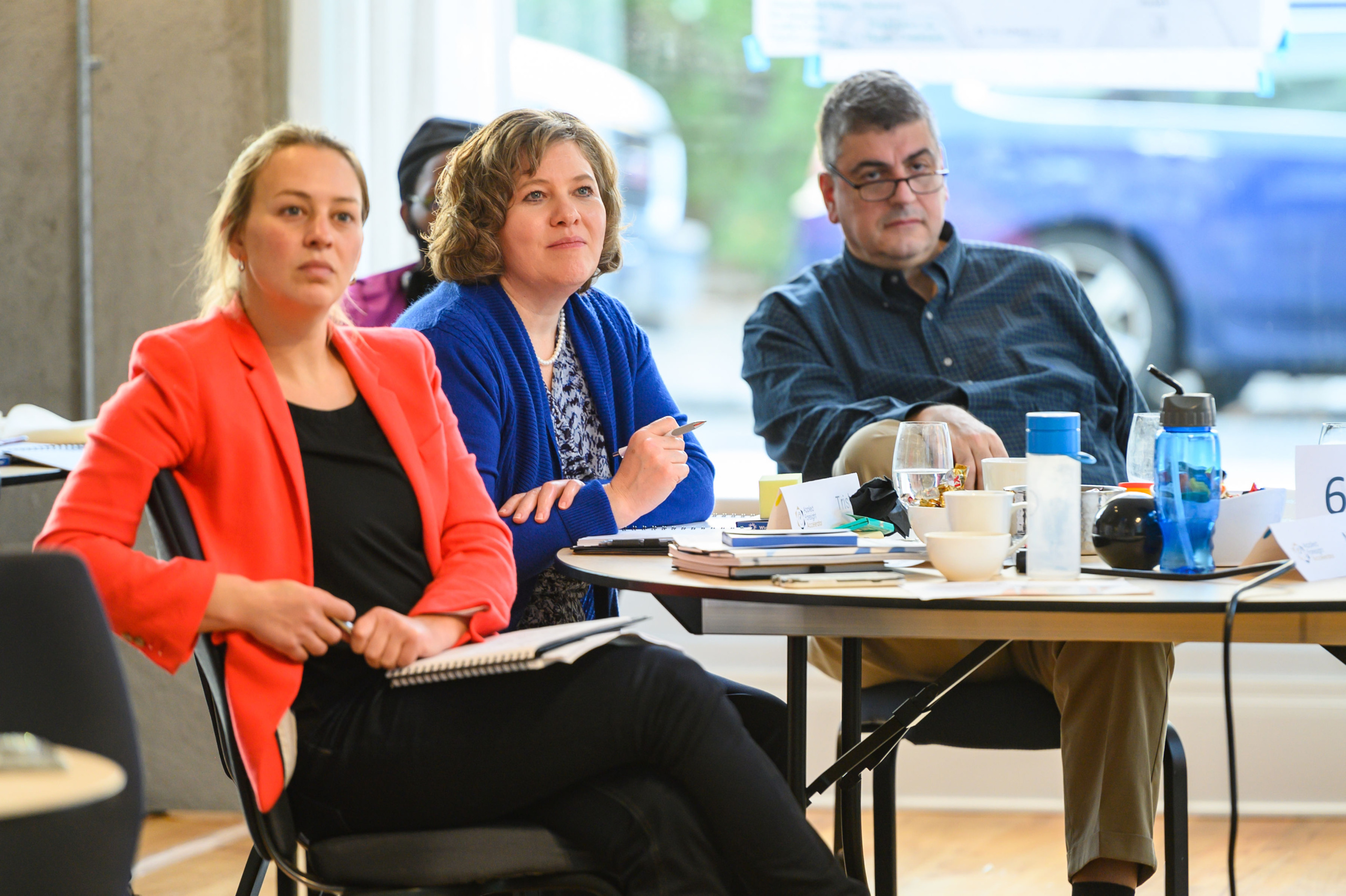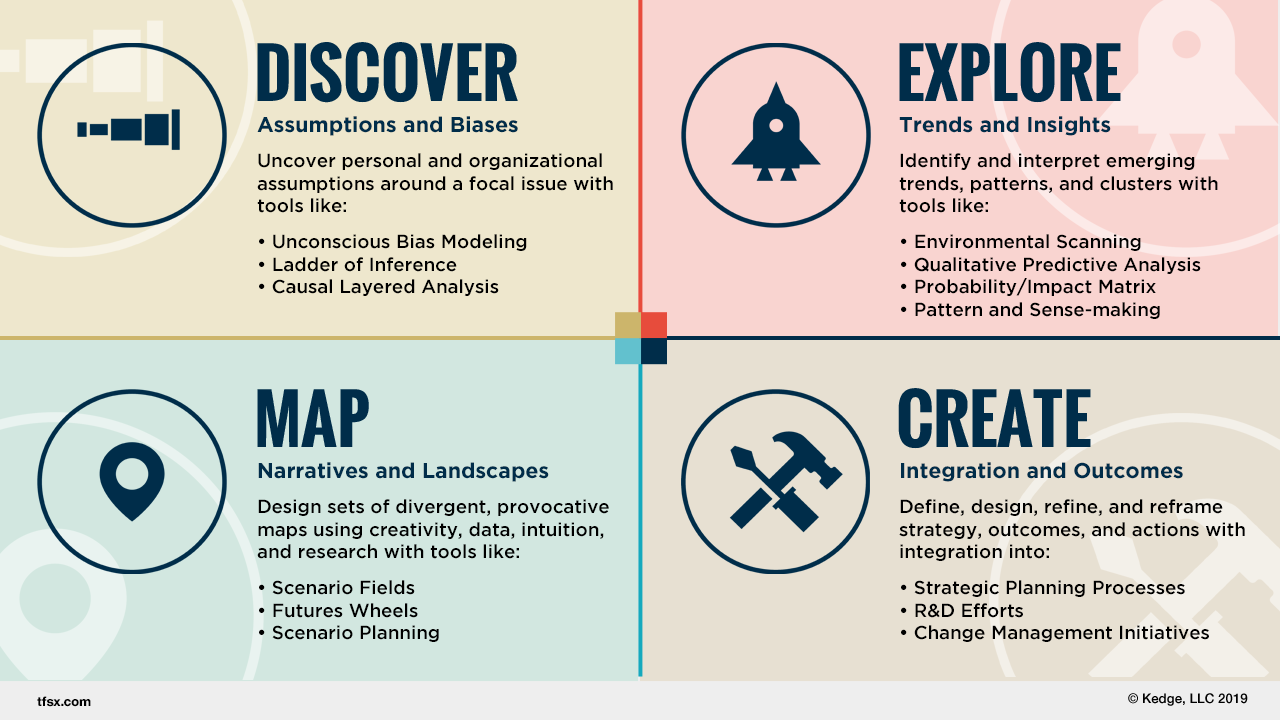Direct a different approach with tools to discover, explore, map, and create futures.
Most people find it difficult to understand complexity. Explaining how it impacts organizations is even harder.
Leveraging complexity in strategic plans when leaders have a hard time dedicating resources to foresight to begin with? Like talking to a brick wall.
You see the value of transformative thinking, but you might be suffering under “auto-pilot” leadership. Confirm this diagnosis yourself, are they exhibiting any of these symptoms?
Prescribing a solution won’t cure auto-pilots. Don’t tell them what to think, or what the company should do, or you’ll hear some variation of the phrase, “this is the way it’s always been done (but let’s try AI!)”.


Build skills as you practice foresight at work.
Strategists, researchers, and foresight specialists are all looking to close similar gaps.
Perhaps what you’re looking for is a foresight toolkit for bringing others along.
This Guide is a concrete step toward deepening your relationship with the future. It can also be a tool you share to democratize the future.
Someone has to wake up the driver sleeping at the wheel.
“Wildcard disruptions” represent unconscious, reflexive decision making. Let’s face it, we all saw [insert wildcard disruption] coming. No one wanted to talk about the elephant in the room.
Lack of foresight is everywhere, even in the tech industry. Because the future is not about technology, it’s about people.
When we assume the future is tech-focused, we neglect social and ecological needs.

Believe it or not, leadership has the capacity to change. Walk them through a foresight process with this Guide. Or, take the book around the world as a freelance futurist.

Imagine what managers would do if they didn’t fear complexity (and felt ownership over foresight processes).
What would happen if you leaned into a professional foresight role?
Natural Foresight builds capacity for futures thinking, within organizations and within people.
Natural Foresight Technical Domain

Below is a selection of tools from the Natural Foresight Framework
Recognize cognitive biases that distort our present and future strategic decision making, countering our subconscious judgment for improved performance.
Highlighted tools in the Discover facet:
“Causal Layered Analysis” (CLA) is a Strategic Foresight tool that helps participants to delve beneath the surface of an issue, uncover deeper causes, and strategically re-position the view of an existing problem.
In the Overcoming Educated Incapacity exercise, participants discuss the assumptions, constants, and indisputable facts when it comes to the future of their organization or industry, as a large group or in teams.
Identify insights using a structured process of trend, value, implications, and pattern identification, translating this outside-in data into actionable strategy.
Highlighted tools in the Explore facet:
Assess the probability and impact of a trend or issue in a given year and plot it on the matrix. Repeat with multiple trends (or issues) and multiple time horizons. PIM can be used with a small or large team, with coworkers or senior leadership, and can even be used for self-reflection on the future.
Identify implications (or the ripples of present-day events) to allow thinking to be more provocative. Pinpoint unexpected consequences, and see the connection between siloed ideas, revealing the bigger picture.
Reframe long-term strategies and cope with uncertainty by developing multiple scenarios that ultimately increase organizational resilience, adaptation, and transformation.
Highlighted tools in the Map facet:
Uncover consequences across multiple dimensions and time horizons with this creative foresight mapping tool.
Evaluate strategic future-fitness by pressure-testing organizational plans and constants against four alternative future worlds.
Integrate the opportunities and challenges into today’s organizational processes to fuel future-empowered executive development, strategic planning, strategy design, and ultimately cultural change.
Highlighted tools in the Create facet:
Use this assessment to gain commitments, prioritize resources and identify implementation gaps.
Wicked Designs allows participants to use information from diverse trend cards as a starting point to consider the values and impacts of the emerging issues presented.
Are you new to Strategic Foresight?
Read The Guide to understand the right foresight language to dialogue with your colleagues.
Are you a foresight practitioner?
The Guide is the body of competency and work for certifying your futures practice.
Using Natural Foresight in strategy allows for full participation and transparency. This is important because, stakeholders who have a voice in long-term plans, share a voice in the future.
Holding the credential of Certified Foresight Practitioner piques the interest of my employer and facilitate a conversation about the utility of foresight in our work.
Knowledge about foresight as a discipline is not yet widespread. Acquiring this certification and sharing these skills with others allows me to be an agent of change within my organization.
Heather Bowles, Senior Epidemiologist, USDHHS

Facilitate futures thinking with The Guide to the Natural Foresight Framework.
Level up your foresight career as a Certified Foresight Practitioner.